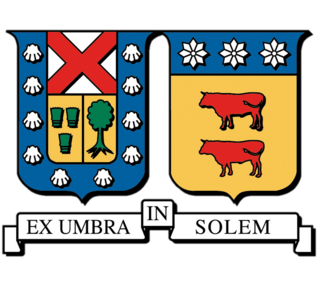
The Federico Santa María Technical University is a Chilean university member of the Rector's Council, founded in 1931 in Valparaíso, Chile.
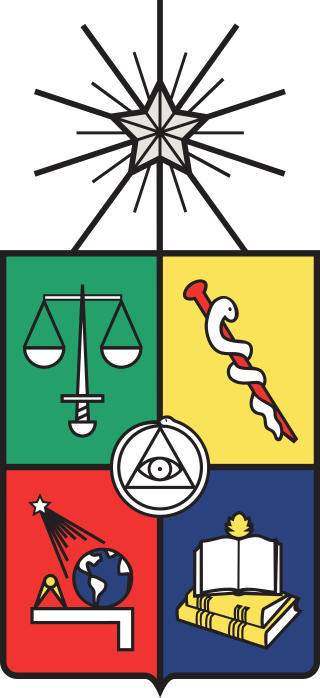
The University of Chile is a public research university in Santiago, Chile. It was founded on November 19, 1842, and inaugurated on September 17, 1843. It is the oldest in the country. It was established as the continuation of the former colonial Royal University of San Felipe (1738), and has a rich history in academic, scientific and social outreach. The university seeks to solve national and regional issues and to contribute to the development of Chile. It is recognized as one of the best universities in Latin America for its leadership and innovation in science, technology, social sciences, and arts through the functions of creation, extension, teaching, and research. It is considered the most important and prestigious university in the country.

The Pontifical Catholic University of Chile is a traditional private university based in Santiago, Chile. It is one of the thirteen Catholic universities existing in Chilean university system and one of the two pontifical universities in the country, along with the Pontifical Catholic University of Valparaíso. Founded in 1888, it is one of Chile's oldest universities.
In Chile, universidades tradicionales refer to universities founded before the 1980s. It usually includes universities derived from traditional ones. A more precise term is Universidades del Consejo de Rectores.

Austral University of Chile is a Chilean research university based primarily in Valdivia, with satellite campuses in Puerto Montt and Coyhaique. Founded on September 7, 1954, it is one of the eight original Chilean Traditional Universities. It operates as a nonprofit self-owned corporation under private law, and receives significant state-funding.

The University of Antofagasta is a public research university located in Antofagasta, Chile. It is a derivative university part of the Chilean Traditional Universities.
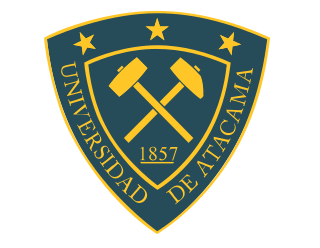
University of Atacama or UDA is a university in Chile. It is part of the Chilean Traditional Universities. UDA is in Copiapó, in the Third Region, Atacama.

University of Magallanes (UMAG) is a university in the southern Chilean city of Punta Arenas. It is a public state university and it is part of the Chilean Traditional Universities. The University of Magallanes was established in 1981 during the neoliberal reforms of the Chile's military regime as the successor of Universidad Técnica del Estado's Punta Arenas section. Universidad Técnica del Estado had established the Punta Arenas section in 1961. The University of Magallanes have campuses in Punta Arenas and Puerto Natales as well as a university centre in Puerto Williams. University of Magallanes publishes the humanities and social sciences journal Magallania twice a year.

The University of Talca is a Chilean university located in the cities of Talca, Curicó, Linares, Santa Cruz and Santiago. Its headquarters and largest campus are located in the city of Talca. It is part of the Chilean Traditional Universities, the Consortium of State Universities and the Group of Regional Universities of Chile.

The University of Valparaíso (UV) is a state public university in Chile, with its headquarters and the majority of its campuses in the city of Valparaíso. It has several other campuses in the Valparaiso Region of Chile and in Santiago, which is 100 km from Valparaiso.

The Andrés Bello National University is a Chilean private university founded in 1988.

Telenorte is a Chilean Television brand, launched as a TV network in 1966, closed in 2001 and relaunched through streaming since the 2010s. The network had stations in Arica, Iquique, Antofagasta and La Serena.

The following is an alphabetical list of articles related to the Republic of Chile.
The Confederation of Chilean Students is a student organization in Chile that congregates the student federations of universities in Chile.
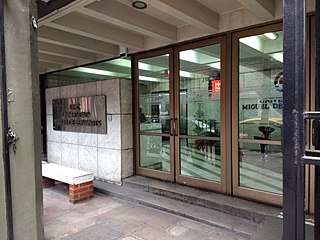
Miguel de Cervantes University is a private university located in Santiago de Chile and was established on 1996. This university had around 853 students in 2010. It is accredited by Chile's National Accreditation Commission (CNA-Chile).
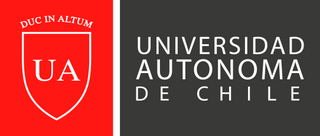
The Universidad Autónoma de Chile (UAutónoma) is a private Chilean university. It has campuses in Temuco, Talca and Santiago.
Club Deportivo Universidad Técnica del Estado was a Chilean association football club linked to the Technical University of the State of Chile.
The 2021 Copa Chile, was the 41st edition of the Copa Chile, the country's national football cup tournament. The tournament began on 15 June 2021 during the mid-season break due to the 2021 Copa América and ended on 4 September 2021, with the final match on neutral ground. Colo-Colo were able to defend the title won in the previous edition of the competition, winning their thirteenth Copa Chile after beating Everton in the final by a 2–0 score.
Guacolda Antoine Lazzerini was a Chilean mathematician and educator.

















